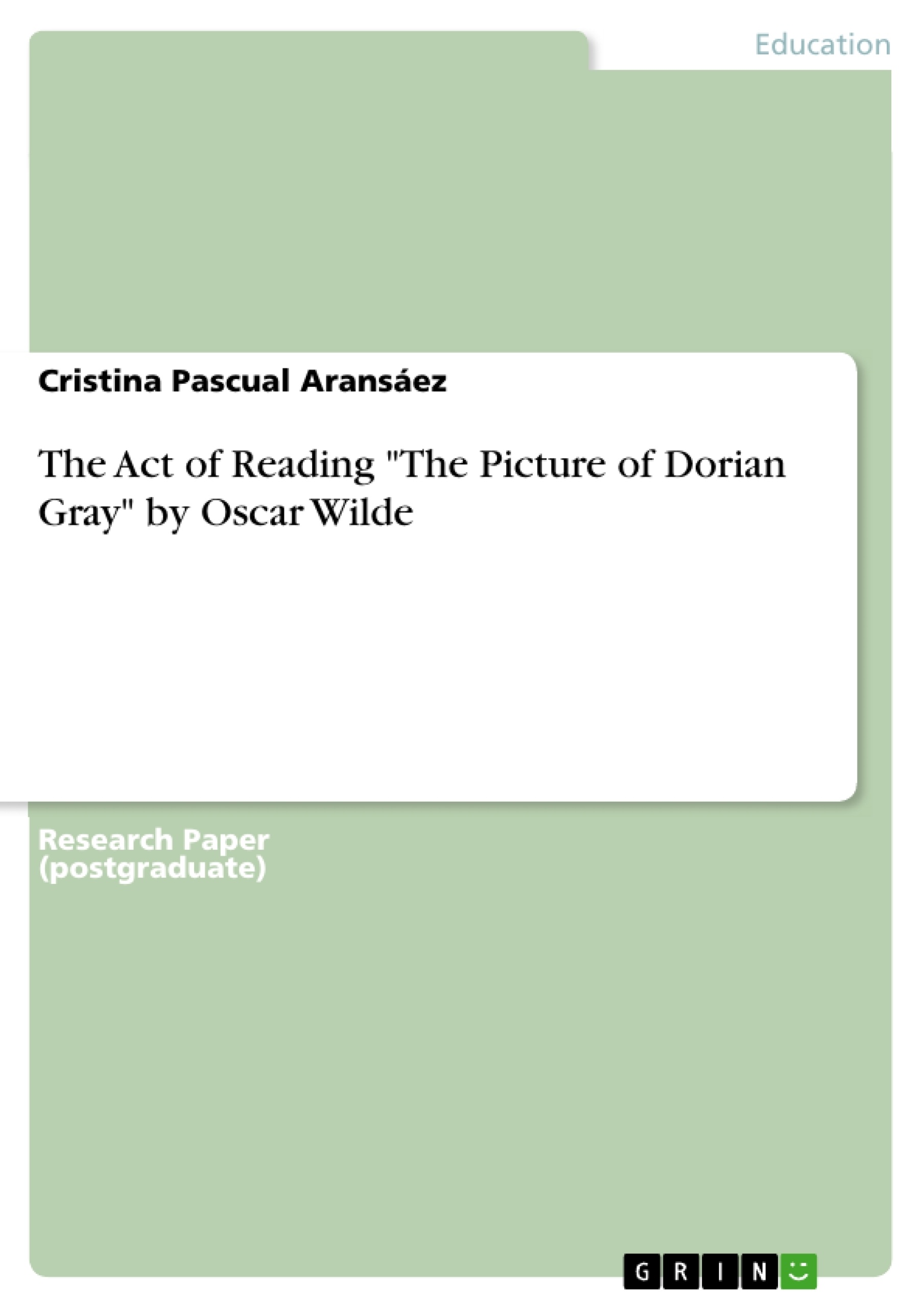This study analyses the act of reading The Picture of Dorian Gray from the perspective of Reception Theory. In his critical writings, Oscar Wilde asserts that the receiver of a work of art must play a dynamic role in the construction of its meaning, and the analysis of his only novel shows that Wilde encourages the reader to participate actively in its production in order to be able to find out the lesson which is inherent in it. As a result, the research shows that The Picture of Dorian Gray is representative of Wilde’s aesthetic principles not only because it promotes the individuality of the reader but also because the moral in it is subordinated to its artistic effects.
Table of Contents
- INTRODUCTION
- THE ACT OF READING THE PICTURE OF DORIAN GRAY
- Methodological Framework
- Analysis of The Picture of Dorian Gray
- CONCLUSION
Objectives and Key Themes
This study examines Oscar Wilde's only novel, *The Picture of Dorian Gray*, through the lens of Wolfgang Iser's Reception Theory. The analysis aims to demonstrate how Wilde's novel embodies his critical views on the interaction between artist, reader, and artwork. It also explores how Wilde uses the reader's active participation in constructing meaning to illuminate the flaws within Victorian society.
- Wilde's conception of the reader and their active role in creating meaning.
- The influence of Victorian social and moral norms on the text and the reader's understanding.
- The contrasting perspectives of characters and their impact on the reader's perception.
- The role of secrets and gaps in the narrative in engaging the reader's imagination and interpretation.
- The moral lesson of the novel and its implications for both Victorian society and the individual reader.
Chapter Summaries
- Introduction: The study provides context for analyzing *The Picture of Dorian Gray* through Reception Theory, highlighting Wilde's emphasis on the reader's role in shaping the work's meaning. It also connects Wilde's views to contemporary literary criticism, particularly Iser's work.
- Chapter 1: This chapter introduces the reader to the characters, Basil Hallward and Lord Henry Wotton, and their contrasting perspectives on Victorian society. The dialogue between them establishes the thematic tension between puritan morality and decadent aesthetics.
- Chapter 2: Dorian Gray is introduced, and the reader observes his initial attraction to Lord Henry's controversial principles. The chapter culminates in Dorian's pact with the devil, expressing his desire for eternal youth and his rejection of Basil's values.
- Chapter 3: The chapter focuses on Lord Henry's character, showcasing his brilliance and his manipulative nature. The reader is introduced to his wife, Victoria, who represents the hypocrisy and superficiality of Victorian society.
- Chapter 4: This chapter delves into the relationship between Dorian and Sibyl Vane, highlighting their contrasting perspectives on love and art. Dorian's rejection of Sibyl after her disappointing performance reveals his superficiality and his obsession with beauty.
- Chapter 5: Sibyl's suicide, and its impact on both Dorian and Basil, is explored. The chapter contrasts Dorian's indifference with Basil's genuine sorrow, highlighting the flaws of both hedonism and Victorian morality.
- Chapter 6: The reader learns about Dorian's hidden life, his pursuit of pleasure, and his increasing corruption. The chapter also reveals the extent to which Victorian society is blind to Dorian's true nature.
- Chapter 7: The chapter describes the growing influence of a "poisonous book" on Dorian's psyche, pushing him further into a life of depravity.
- Chapter 8: The chapter focuses on the relationship between Dorian and Basil, leading to Dorian's revelation of his secret and Basil's subsequent murder.
- Chapter 9: The reader witnesses the aftermath of Basil's death, observing Dorian's indifference and his willingness to engage in further immoral acts.
- Chapter 10: This chapter introduces Alan Campbell, another victim of Dorian's influence, and reveals Dorian's ruthless manipulation.
- Chapter 11: The chapter portrays Dorian's ongoing pursuit of pleasure and his detachment from the consequences of his actions.
- Chapter 12: Dorian's attempt to escape his past and his decision to change are explored, but the reader recognizes his underlying instability and self-deception.
- Chapter 13: The chapter delves into Dorian's final confrontation with his corrupted soul and his futile attempt to destroy the portrait that reflects his true nature. The reader witnesses Dorian's tragic downfall.
Keywords
This study examines *The Picture of Dorian Gray* through the lens of Reception Theory, focusing on the reader's role in constructing meaning and revealing the text's social critique. Key terms and concepts include: aestheticism, hedonism, Victorian society, double nature, hypocrisy, self-deception, moral lesson, and the dynamic reader.
- Quote paper
- PhD Cristina Pascual Aransáez (Author), 1999, The Act of Reading "The Picture of Dorian Gray" by Oscar Wilde, Munich, GRIN Verlag, https://www.hausarbeiten.de/document/450739


